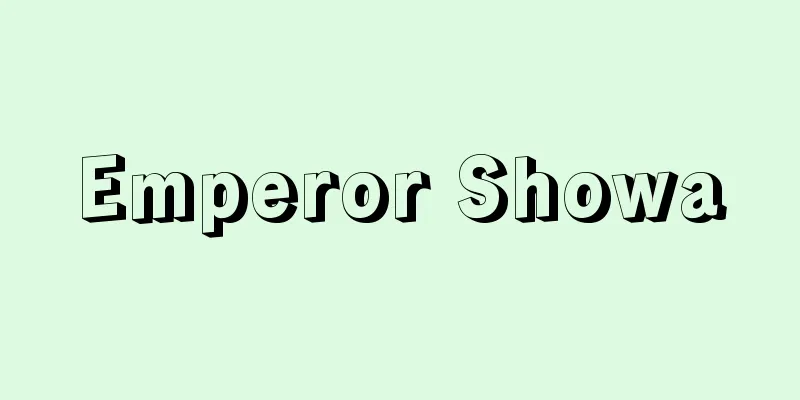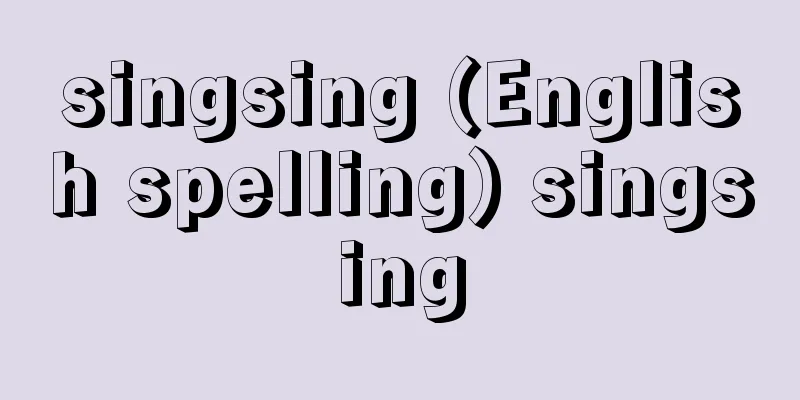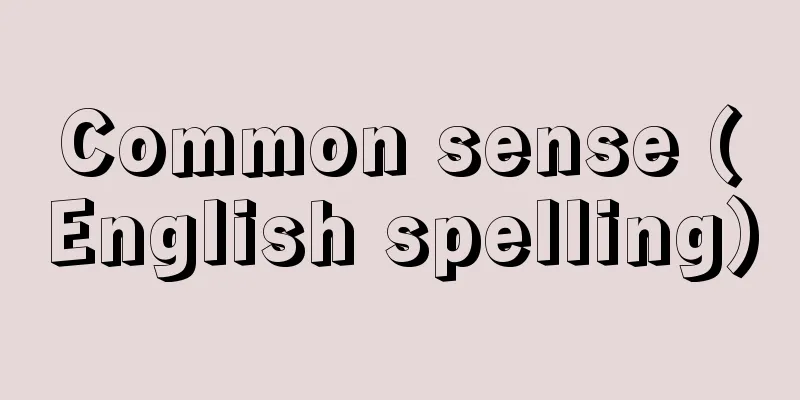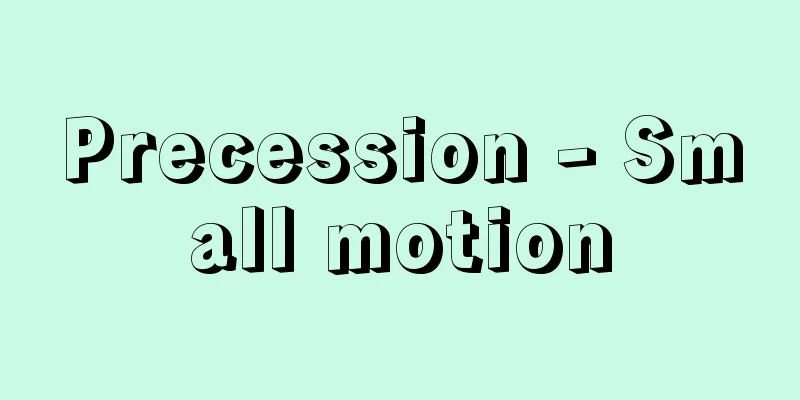Emperor Showa

|
Year of death: January 7, 1989 Year of birth: April 29, 1901 (Meiji 34) He reigned from 1926 to 1964. He was the first son of Crown Prince Yoshihito (Emperor Taisho) and Crown Princess Setsuko (Empress Teimei). He was named Hirohito by Emperor Meiji and given the title of Tokunomiya. He was brought up by the Kawamura Sumiyoshi family, graduated from Gakushuin Elementary School in 1914, and studied at the Togu Gakumonsho, headed by Togo Heihachiro, for 1917 under the guidance of leading scholars and educators such as Shiratori Kurayoshi, Hattori Kotaro, and Sugiura Jugo. The investiture ceremony for the Crown Prince was held in 1917, Kuninomiya Yoshiko was appointed Crown Princess in 1918, and his coming-of-age ceremony was held in 1919. As Emperor Taisho's condition worsened, expectations for Prince Hirohito were high, and in 1918 he made his first visit to Europe as Crown Prince (particularly to promote goodwill with the British Imperial Family). There was a movement to change the engagement due to the color blindness problem in the Kuni family, but it was decided to go ahead with the engagement as planned before the departure (a certain major incident at the Imperial Court). After returning to Japan, he became Regent and married in 1941. During this time, there was a visit to Taiwan in 1947 and an anarchist shooting incident at the end of the year, but he was assisted by a liberal group including elder statesman Saionji Kinmochi, Minister of the Interior Makino Nobuaki, and Minister of the Imperial Household Ichiki Kitokuro, and carried out government affairs. In 1942, he ascended to the throne upon the death of Emperor Taisho, and the era name was changed to Showa. Emperor Taisho's funeral was held in 1927 (Showa 2), and the Imperial Enthronement Ceremony was held in Kyoto in 1928. Around this time, the Emperor was worried about the actions of the Army, and his scolding of Prime Minister Tanaka Giichi in 1941 for the assassination of Zhang Zuolin was a manifestation of this. Even after that, there was a lot of doubt about the military, and the Emperor's actions during the London Treaty and the Manchurian Incident were an extension of this. The "reformist faction," seeking to "break the status quo," attacked the emperor's close aides as "traitors to the emperor," which led to the February 26 Incident (1936). The emperor, who had lost many of his trusted aides during this incident, was furious and strongly requested that the incident be suppressed. He expressed strong hesitation about the start of the Second Sino-Japanese War in 1947, and about the outbreak of war between Japan and the United States in 1948, but ultimately gave his approval when it was sought through proper procedures. In August 1945, when the cabinet and the Supreme Command were divided over whether to accept the Potsdam Declaration and no decision could be made, he clearly expressed his intention to accept it, playing a decisive role in the final decision. The Emperor's radio broadcast on August 15 was the first time that the general public heard the emperor's voice in person, and played a major role in the smooth surrender. During the occupation, the emperor's supreme authority was placed under the command of the Supreme Commander of the Allied Powers, and on September 27, the emperor visited MacArthur, and the photograph of the small emperor standing next to the tall MacArthur shocked the public. However, it is said that MacArthur was impressed by the Emperor's attitude at the time. In January 1946, the Emperor issued the so-called "Humanity Declaration," toured various parts of the country, encouraging the people working toward reconstruction and receiving a warm welcome. In 1942, the Japanese Constitution designated him as the "symbol of national unity," a role he faithfully fulfilled thereafter. He visited Europe with the Empress in 1946 and America in 1950. He was in and out of hospital several times from 1962, and died in 1964 from a duodenal peripapillary tumor. A grand funeral was held the following year. He enjoyed watching sumo wrestling, and studied biology from a young age, writing eight books including "Hydrozoans of Sagami Bay." (Takashi Ito) Source: Asahi Japanese Historical Biography: Asahi Shimbun Publications Inc. About Asahi Japanese Historical Biography |
|
没年:昭和64.1.7(1989) 生年:明治34.4.29(1901) 昭和1(1926)年から同64年まで在位。皇太子明宮嘉仁親王(大正天皇)と皇太子妃節子(貞明皇后)の第1皇子。明治天皇から裕仁と命名され,迪宮の称号を賜った。川村純義家に養育され,大正3(1914)年学習院初等科を卒業し,東郷平八郎を総裁とする東宮御学問所で,白鳥庫吉,服部広太郎,杉浦重剛など一流の学者,教育者を教師として,10年まで学んだ。大正4年に立太子の礼,6年皇太子妃に久邇宮良子が内定,8年成年式が行われた。大正天皇の病状の悪化とともに,裕仁親王に対する期待は大きく,皇太子として最初のヨーロッパ訪問(特に英皇室との親善)が10年に実現。久邇宮家の色盲問題で婚約の変更を求める運動もあったが,この出発前に内定通りという決定がなされた(宮中某重大事件)。帰国後摂政に就任し,13年結婚。この間12年台湾行幸,年末アナキストによる狙撃事件もあったが,元老西園寺公望,牧野伸顕内大臣,一木喜徳郎宮内大臣らリベラルなグループによる補佐を受け,政務を執った。 15年大正天皇の死去とともに践祚,元号が昭和と改められた。昭和2(1927)年の大正天皇の大葬,そして3年京都で御大典が挙行された。この前後,天皇の心労は陸軍の行動で,張作霖爆殺事件に関しての4年の田中義一総理に対する叱責はその現れであった。その後も軍部に対する疑念は大きく,ロンドン条約,満州事変における天皇の行動もその延長線上にあった。「現状打破」をめざす「革新派」は,天皇側近を「君側の奸」として攻撃し,2・26事件(1936)が起きた。このとき信頼する側近を多く殺害された天皇は激怒して,その鎮圧を強く要望した。12年に始まる日中戦争についても,また16年の日米開戦についても,強く躊躇の態度を表明したが,正規の手続きによって裁可を求められたものは最終的には裁可を与えた。20年8月ポツダム宣言受諾か否かをめぐり内閣,統帥部が分裂し,態度決定ができなかったとき,はっきり受諾の意思を表明,最終決定に決定的な役割を果たした。8月15日の玉音放送は国民一般が天皇の生の声を聞いた最初であり,スムーズな降伏に大きな役割を果たした。 占領下天皇大権は連合国軍総司令官の下に置かれ,9月27日天皇はマッカーサーを訪問,その際の,背の高いマッカーサーの脇に並んだ小柄の天皇の写真は国民にショックを与えた。しかしこのときマッカーサーは天皇の態度に感銘を受けたといわれる。21年1月いわゆる「人間宣言」を発した天皇は全国各地を巡幸し,再建に働く国民を激励し,また熱烈な歓迎を受けた。22年の日本国憲法で「国民統合の象徴」と位置づけられ,以後その役割を忠実に果たした。皇后と共に46年にはヨーロッパを,50年にはアメリカを訪問。62年以来入退院を繰り返し,64年十二指腸乳頭周囲腫瘍で崩ず。翌年大葬が行われた。相撲観戦を好み,また若いときから生物学を学び『相模湾産ヒドロ虫類』など8冊の著書がある。 (伊藤隆) 出典 朝日日本歴史人物事典:(株)朝日新聞出版朝日日本歴史人物事典について 情報 |
Recommend
Awayuki tofu - Awayuki tofu
〘Noun〙① A special tofu that melts instantly on the...
Kneller, G.
…In the Elizabethan era, N. Hilliard and Isaac Ol...
Valentin de Boulogne
1591 or 1594-1632 French painter. He went to Rome ...
Folk medicine - Minkanryoho (English spelling) Folk medicine
It can be said that it includes all medical activ...
Crankcase oil
…It is also called crankcase oil. Lubricating oil...
Puerperal psychosis
This is a general term for psychotic states that o...
Haptoncus ocularis (English spelling)
...It is known as a pest of stored grains. The Mo...
Mr. Yonekura
A feudal lord of the early modern period. Born in ...
talc
Mg 6 [Si 8 O 20 ](OH) 4 . Also called talc. A phy...
Kirin Seagram Co., Ltd. - Kirin Seagram
…The subsequent appreciation of the yen and the m...
Fudoso - Fudoso
During the Ritsuryo period, the Shozei (regular t...
Palanquin carrier - Kagokaki
〘 noun 〙 A person whose occupation is to carry pal...
Public funding for education - Kyoikuhikouhifutanshugi
...Expenses for preparing the necessary human and...
Hiroji Otani (Hiroji Otani)
Kabuki actor. (1) First generation (1696-1747 | Ge...
Corvidae
...Also closely related to the crow genus are the...









